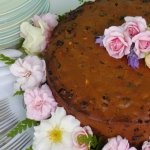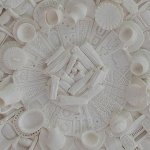Up before dawn, invitations to tea, aunt Tottie’s famous sponge cake, making seasonal jams and preserves: it can only mean one thing – this month we’re visiting Meroogal!
Located in Nowra in the Shoalhaven region south of Sydney, Meroogal is a very special place as this introductory video shows. It was built on a ‘suburban allotment’ on the edge of the infant town of Nowra – a site that allowed it an orchard and kitchen garden – by Robert Taylor Thorburn for his widowed mother Jessie, and four of his sisters. The design was by his uncle Kenneth McKenzie, who also designed and made furniture and household objects still seen in the house. Like another of the Sydney Living Museums properties, Rouse Hill House, the rooms of Meroogal carry evidence of each of the four generations of the Macgregor and Thorburn women who called it home from 1886 until 1985.
To enter the front door of Meroogal is to step into the the family’s everyday lives of social rounds and family ties, domestic chores and routines, the delight in preserves from their orchard and afternoon tea enjoyed with visitors.
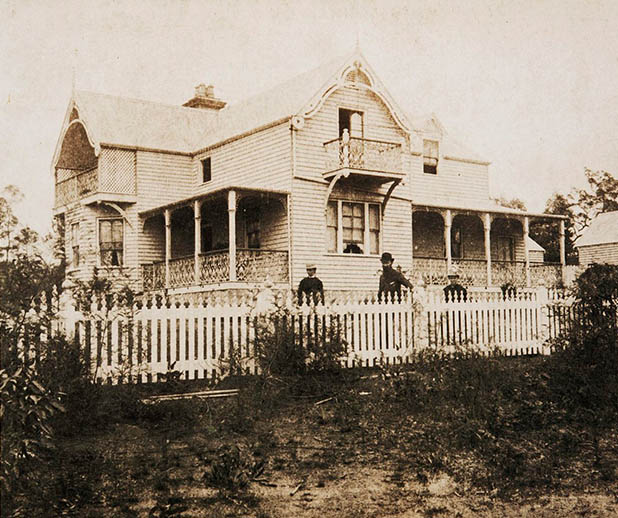
Photograph of Meroogal exterior, circa 1887. The man in the bowler hat is Robert Taylor Thorburn and the women are his sisters Belle Thorburn (left) and Tot Thorburn (right). Private Collection
This rich layering has been preserved through the gift of June Wallace, who inherited Meroogal after the death of her aunt Margaret in 1971. Following her decision to sell the property, and its acquisition by the state government, she donated the furniture, household objects, diaries, photographs and even clothes that remained at the house to the Historic Houses Trust, allowing us to sift through each layer of its occupation, discovering both the continuity over days and years, and the contributions, made by each generation of ‘the ‘Roogals’.
To me as a curator, the wealth of the Meroogal collection is in the interconnected manuscripts and ephemera, and these tell us much of the food stories of the house.
While it is tempting to paint Meroogal in a nostalgic veneer of genteel afternoon teas beneath the jacarandas that shade its garden, this was a house of practicalities, well polished and efficient daily routines and hard work.
In her biography of the Meroogal women, Janet Ramsay describes it well:
When they (the women of Meroogal, Jessie and her daughters) all expected ladylike leisure time, and since the work itself was constant and demanding of considerable skill, the balancing act still required careful planning. This is the main reason for the elaborate routines of the household, laid down in the 1880s and kept up until they appeared a 19th century curiosity in the middle of the twentieth century. Invisible housework is well-planned work, and the Thorburns were experts at it. Their other secret was early rising.
…[The] routines laid down in the 1880s… set a pattern kept largely unbroken a least until the 1930s. The whole thing depended on regularity, early rising and the designation of tasks. Special skills were given appropriate application. Belle and Tot… were the cooks, taking the main responsibility week about. But all did their share, especially when it was preserving or jam making time.
Janet K. Ramsay, The women of Meroogal. Historic Houses Trust, 1998. p61
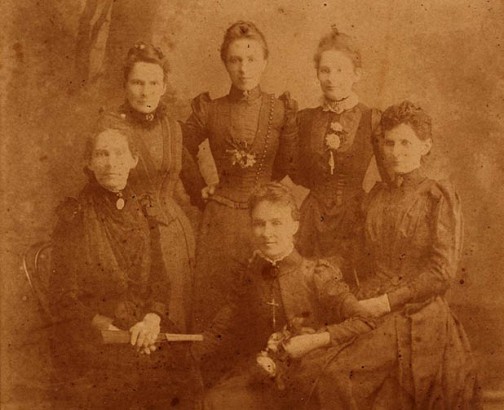
The Thorburn and Billis sisters: standing at the back, left to right: Georgina Thorburn, Katie Billis, Tot Thorburn; seated front, left to right: Kate Thorburn, Lil Billis, Belle Thorburn. Caroline Simpson Library and Research Collection, Historic Houses Trust of NSW
Through reading Tottie Thorburn’s late 19th century diaries, we’re visiting the daily rituals of rising early to turn seasonal produce into jams, marmalades and preserves, and remembering to bake before the heat of the day turns the kitchen itself into an oven. We will climb the lillipilli tree to collect fruit for jelly, and join the ‘aunts’ as they entertain visitors in the parlour. In a paper trail of receipts and letters, we will eavesdrop as a major purchase is made in the 1960s – a new refrigerator whose hire purchase and insurance even required a reference from the local minister.
We’re looking at the evolution of the house: behind its Gothic Revival facades, Meroogal is a Victorian house that was progressively retrofitted and adapted as technology advanced. Though we see this in every room, it is in the kitchen that this is most evident. And for ANZAC day we cook ‘Bob’s pudding’ and remember young lives cut short.
Welcome to Meroogal!
Lemon biscuits
Ingredients
- 225g unsalted butter
- 225g (1 cup) white granulated sugar
- 1 very large egg (or 2 very small eggs)
- zest and juice of 1 lemon
- good pinch of ground nutmeg (optional)
- 450g (2 2/3 cups) plain flour
- 2 teaspoons baking powder
Note
Family members recall Auntie Tottie Thorburn cooking these biscuits, cut into fingers, on large baking trays in the fuel stove at Meroogal.
Makes 30–50 depending on size
Directions
| Preheat the oven to 180°C (160°C fan-forced). Cream the butter and sugar until pale and fluffy, then beat in the egg thoroughly. Add the lemon zest, 1 tablespoon of the lemon juice, and the nutmeg, if using, and stir well. | |
| Sift the flour and baking powder into the butter mixture and mix until fully incorporated. Turn out onto a well-floured board and knead into a smooth dough, adding a little extra lemon juice if the dough is too dry. | |
| Working in small batches, roll the dough out to 3–5-mm thickness between two sheets of baking paper and cut into desired shapes with biscuit cutters. Place on a baking tray lined with baking paper and cook for 12–15 minutes or until the biscuits just start to colour. Transfer the biscuits to a wire rack and allow them to cool and harden, and repeat the process until all the biscuits are made. Store in an airtight container for up to 2 weeks. | |
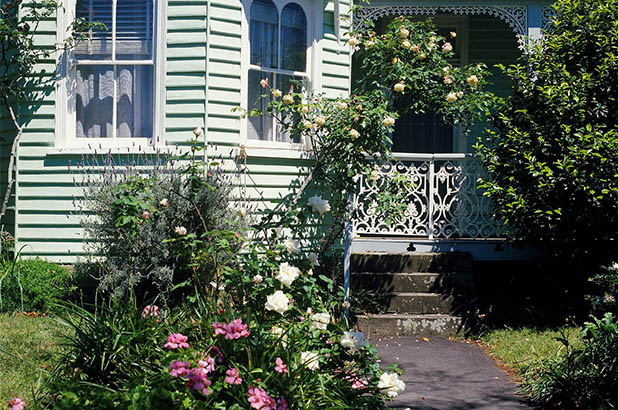
 Print recipe
Print recipe